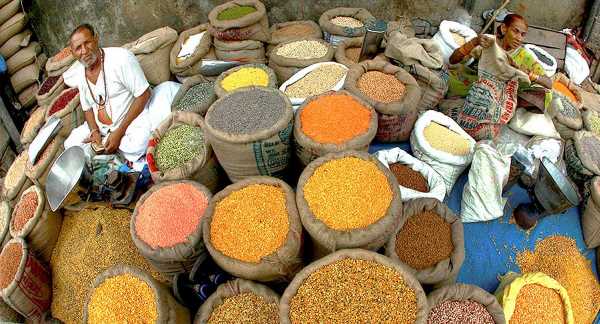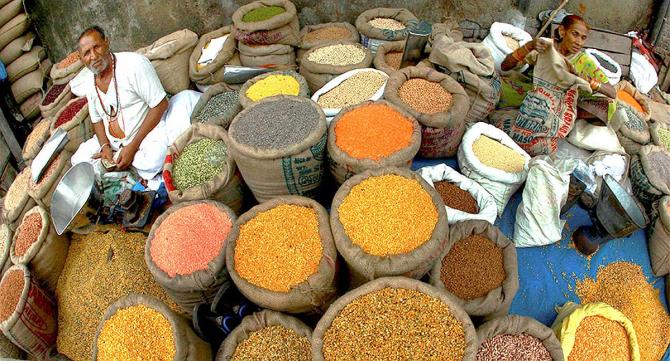Kharif crop prices will guide inflation fight in coming mths
The Centre recently released the first advance estimates of kharif crops that, barring tur dal, showed a dip in production due to uneven monsoon and other natural calamities including pest attacks in cotton.
The first Advance Estimates, released a few weeks back, are usually initial projections on the crop size and, more often than not, are revised as more inputs come from the fields. But, the findings have rung alarm bells in several quarters.
The Centre, along with many others, is confident that as more details come, the estimates will be revised upwards.
But if the numbers stay around their projections, it could spell trouble for inflation, particularly in crops such as rice, pulses, edible oils, and cotton to some extent.
This should be of concern to the government as it enters the crucial election year.
The polls in the three states of Madhya Pradesh, Rajasthan, and Chhattisgarh could also be influenced if inflation remains high.
A recent analysis by rating agency CRISIL showed that the price of an average vegetarian thali might go up in November if higher prices of onion which accounts for around 10 per cent of the total cost of a veg thali persist.
In October, too, it said prices could not moderate by much as the price of pulses, which accounts for a 9 per cent share in the cost of a veg thali, increased 19 per cent on-year.
CRISIL’s veg thali comprises roti, vegetables (onion, tomato, and potato), rice, dal, curd, and salad.
For non-veg thali, the constituents remain the same as in veg thali, except dal is replaced by broiler chicken.
The prices are on a raw material basis.
An analysis by SilkRoute.ag, a global agritrade firm based in Dubai, shows that among major kharif crops, cotton prices are expected to remain bearish due to weak demand and new crop arrivals, though output is likely to be down this year to around 27-28 million bales, while pulses prices are projected to remain strong.
Within pulses, moong rates are expected to bounce back after a slight correction, while pigeon peas (arhar dal) rates are also likely to remain firm.
Chana and urad prices, according to the weekly analysis, are likely to push up in the days to come after a brief lull.
Another commodity whose prices are of interest to many is soybean, particularly in the context of Madhya Pradesh polls, where it is one of the main kharif crops.
The SilkRoute analysis shows prices will remain firm despite steady crop arrivals and could reach Rs 6,000 per quintal, which would be much higher than the MSP of Rs 4,600 a quintal for 2023-24.
Wheat prices are expected to stay firm as there is minimal crop with the millers, though there has been a slight moderation in the past few days due to excess liquidation by the government, but the underlying sentiment remains bullish.
In rice and maize, too, analysts said prices would remain firm, mirroring wheat and other cereals.
In veggies, onion prices could drop from their current elevated levels and trade sideways in the days to come after the new late kharif harvest starts hitting the market, the analysis showed.
Sandeep Sabharwal, chief executive officer of Sohan Lal Commodity Management Group, said in a note that an analysis of this year s kharif crop production shows an increase in rice cultivation leading to a marginal improvement in rice output.
Conversely, the production of pulses is anticipated to decline, given the unlikely significant change in the sowing area.
For oilseeds and cash crops like sugarcane, the output estimate is slightly higher than the previous year.
This has influ enced domestic prices, with most significant commodities experiencing an upward trend.
On paddy and maize, which accounts for more than 85 per cent of the total kharif cereal production, the production of this kharif is expected to remain above average levels, according to Sabharwal.
On cotton, he feels, the demand from both domestic mills and international markets is expected to remain low, mainly due to the decrease in fiber and yarn prices from the peak levels observed last year.
On the whole, the coming few months might remain challenging for a lot of commodities and their prices.
Source: Read Full Article


